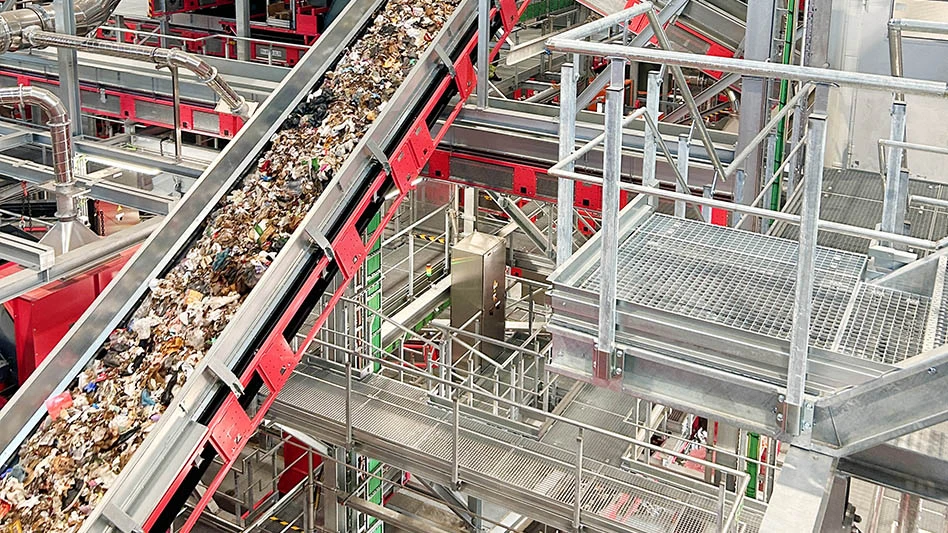
For residential haulers, selecting the right cart tipper will minimize the need for manual lifting while maximizing productivity, efficiency and profits.
At a cost of about 1 percent of the total price of a brand-new garbage truck, tippers offer an impressive return on investment. By reducing the time and effort needed to load and unload, improving the efficiency of your collections operation and minimizing downtime for your fleet, the right tipper translates into significant cost savings and ultimately adds revenue to your bottom line.
ROTAC® tippers from Micromatic, a U.S.-based manufacturer and supplier of rotary actuators, waste tippers and automated assembly equipment, deliver unmatched performance. With a practical design featuring the company’s class-exclusive, high-efficiency rotary vane actuator, Micromatic delivers the most durable rear-load and side-load cart tippers on the market.
Engineered for performance.
ROTAC® tippers feature a straightforward design engineered for reliability and durability. Designed with input from industry operators, these tippers boast a design utilizing the fewest parts count available in the industry. For operators, fewer parts translates to less downtime as well as fewer parts to keep in inventory—which means money isn’t tied up in spare parts sitting in your warehouse.
ROTAC® tippers are designed without the need for latches and springs that are common failure points operator experience when using alternative tipper brands. Rather than spring latches, the ROTAC® tipper includes hard stops that interface with oscillating hooks, ensuring less fatigue on the hooks and avoiding costly downtime due to breakage. Where alternative tippers utilize plastic saddles, Micromatic’s durable tippers are made with a reinforced all-steel saddle. For the operator, these design upgrades translate into far fewer breakdowns, which virtually eliminates downtime losses due to repair.
Tipper Efficiency.
ROTAC® tippers are especially reliable when lifting large or heavy containers since the ROTAC® tipper offers the most lifting capacity in the industry. ROTAC® tippers feature industry-leading lifting capacity and are rated at over two times the capability of competitive units. In fact, the Recoil model tipper utilizes industry-exclusive rotary vane actuator technology and heavy-duty steel construction, offering lifting capacity of more than 800-plus pounds at 3,000 PSI.
Made in the USA.
ROTAC® tippers are engineered, designed, manufactured, assembled and tested in Berne, Indiana. The company’s U.S.-based engineering team prides itself on a culture of continuous improvement, striving to make its products better for the end user by improving and implementing design changes with the end user in mind.
ROTAC® tippers are always in stock and ready to ship, which means customers never wait on orders or replacement parts. Plus, Micromatic sets the industry standard as the only tipper manufacturer on the market that produces its actuator, rather than outsourcing it — quality and lead time are never compromised because the entire unit is manufactured in-house, unlike alternative tipper brands. ROTAC® tippers offer a turnkey solution with no waiting time, ideal for haulers that need a product to get a fleet up and running fast. As the only manufacturer that engineers and produces the entire cart tipper, lift iron and rotary actuator 100 percent in the USA, Micromatic is elevating the industry standard in waste collection for rear-load and side-load trucks.

Explore the July/August 2024 Issue
Check out more from this issue and find your next story to read.
Latest from Waste Today
- US Senate backs reduced cuts to EPA
- ELV Select Equipment, Reworld aid NYPD in secure firearm disposal
- Waste Connections announces Q2 results
- Returnity and Cosmoprof to address reusable bag waste
- SWANA releases report on aging WTE facilities
- New economic assessment reveals cost benefits of California’s SB 54
- Premier Truck Sales & Rental opens new facility
- TeknTrash Robotics, Sharp Group partner on humanoid robot pilot





